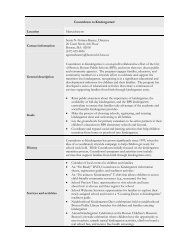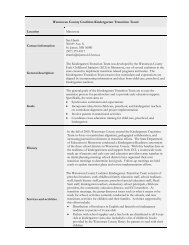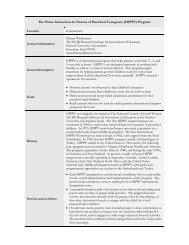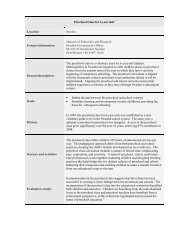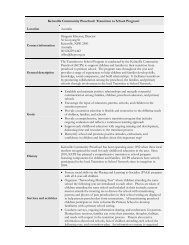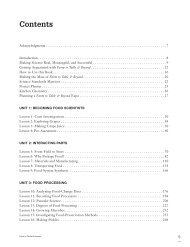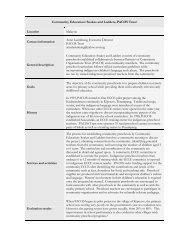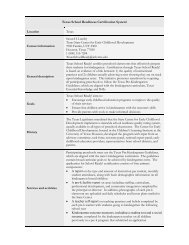Proceedings of the Fourth Annual Teachers College Educational ...
Proceedings of the Fourth Annual Teachers College Educational ...
Proceedings of the Fourth Annual Teachers College Educational ...
You also want an ePaper? Increase the reach of your titles
YUMPU automatically turns print PDFs into web optimized ePapers that Google loves.
A Difficult Balance: Regulating Cyberbullying in <strong>the</strong> Age <strong>of</strong> Social<br />
Media<br />
Dino Sossi,<br />
<strong>Teachers</strong> <strong>College</strong>, Columbia University, 525 West 120 th Street, New York, NY, 10027,<br />
Email: dds2130@columbia.edu<br />
Abstract: Online environments have promoted interconnectivity in ways that were once<br />
unimaginable. Unfortunately, hate speech, intimidation and harassment have made <strong>the</strong><br />
dreamlike promise <strong>of</strong> online worlds devolve into an ongoing nightmare for some students<br />
who feel <strong>the</strong>y cannot escape. Even <strong>the</strong> presumably safe environment <strong>of</strong> <strong>the</strong> home can<br />
become tainted by hostile words mediated online. This paper examines different attempts<br />
to regulate cyberbullying within educational environments. It focuses on <strong>the</strong> jurisdictions<br />
<strong>of</strong> New York State and New York City. To contextualize this issue, <strong>the</strong> paper also reviews<br />
common law precedent as a guide to possible future legal developments. Finally, related<br />
non-legal issues such as policies created at <strong>the</strong> local level as well as difficulties youth<br />
have distinguishing between real and virtual environments are considered. The paper<br />
concludes that cyberbullying laws/policies are diverse in <strong>the</strong>ir protection and textured in<br />
<strong>the</strong>ir balancing <strong>of</strong> <strong>the</strong> competing interests <strong>of</strong> <strong>the</strong> aggrieved and alleged perpetrators.<br />
Introduction<br />
Cyberbullying laws/policies are generally well-crafted in <strong>the</strong>ir conception <strong>of</strong> what constitutes this problem,<br />
diverse in protection and textured in balancing competing interests <strong>of</strong> <strong>the</strong> aggrieved and alleged<br />
perpetrators. Given <strong>the</strong> harm caused by cyberbullying and <strong>the</strong> responsibility <strong>of</strong> governments and schools<br />
to provide safe environments, <strong>the</strong>se measures favoring <strong>the</strong> rights <strong>of</strong> alleged victims appears just given <strong>the</strong><br />
breadth <strong>of</strong> <strong>the</strong> problem and <strong>the</strong> tremendous mental/social/emotional toll it exacts.<br />
Regulation<br />
New York City (NYC)<br />
The NYC Department <strong>of</strong> Education Disciplinary Code (2010) appears to be a good faith attempt to<br />
balance <strong>the</strong> interests <strong>of</strong> <strong>the</strong> aggrieved and <strong>the</strong> alleged perpetrator. With respect to “bullying,” <strong>the</strong> Code<br />
states “When a student or group <strong>of</strong> students engages in bias-based bullying, intimidation or harassment<br />
<strong>of</strong> ano<strong>the</strong>r student or group <strong>of</strong> students, both <strong>the</strong> victim and <strong>the</strong> student who engages in this behavior<br />
should be referred to separate appropriate counseling, support and education services provided by<br />
school staff or a community-based agency. Nei<strong>the</strong>r mediation nor conflict resolution are, under any<br />
circumstances, appropriate interventions for bias-based bullying, intimidation or harassment” (2010, p. 5).<br />
It appears both parties are dealt with constructively and separately.<br />
Regardless <strong>of</strong> <strong>the</strong> intensity <strong>of</strong> <strong>the</strong> bullying, both parties are separated and “[n]ei<strong>the</strong>r mediation nor conflict<br />
resolution” are engaged in (Code, 2010, p. 5). Although in <strong>the</strong> short-term this appears prudent, what<br />
about disruption caused by <strong>the</strong> absence <strong>of</strong> mediation or conflict resolution. Assuming both parties remain<br />
at <strong>the</strong> same school, without adult-supervised communication, will <strong>the</strong>re be a resolution <strong>of</strong> <strong>the</strong> underlying<br />
problem that motivated <strong>the</strong> abuse?<br />
Specific protection from “cyberbullying” appears later in <strong>the</strong> Code - “Engaging in intimidating and bullying<br />
behavior through electronic communication, such as texting, e-mail, instant messaging, etc.” (2010, p.<br />
15). Section A37 protects K-5th Grade students (2010, p. 15), B40 protects Grades 6-12 (2010, p. 22)<br />
with identical language - “Engaging in intimidating and bullying behavior, including cyber-bullying —<br />
threatening, stalking or seeking to coerce or compel a student or staff member to do something; engaging<br />
in verbal or physical conduct that threatens ano<strong>the</strong>r with harm; taunting and/or intimidation including<br />
through <strong>the</strong> use <strong>of</strong> epi<strong>the</strong>ts or slurs involving actual or perceived race, ethnicity, color, national origin,<br />
citizenship/immigration status, religion, religious practices, gender, gender identity, gender expression,<br />
sexual orientation or disability” (2010, p. 15 and 22). Students or staff subjected to <strong>the</strong>se enumerated<br />
types <strong>of</strong> discrimination through electronic means would be afforded similar protections against this type <strong>of</strong><br />
64



